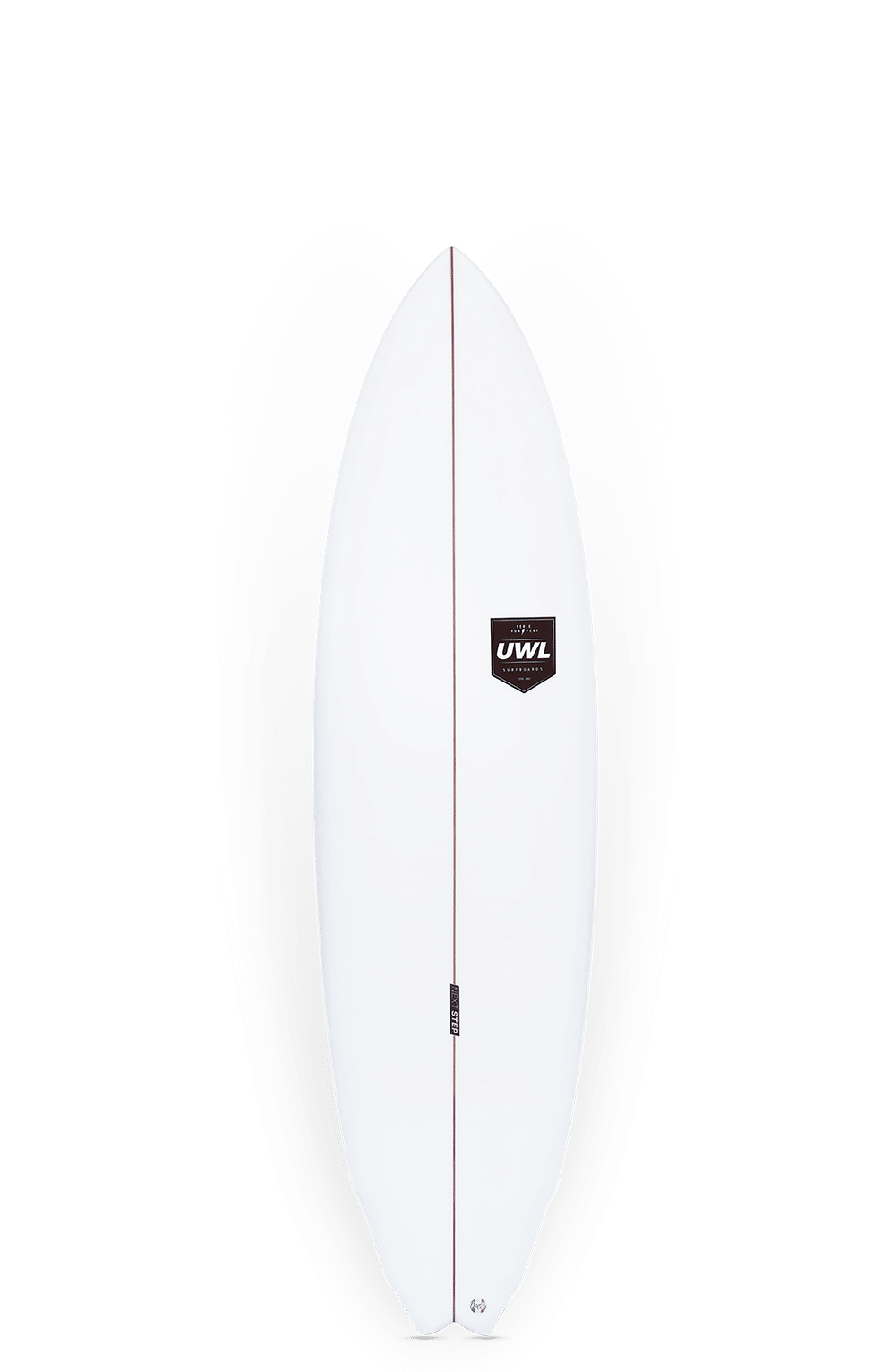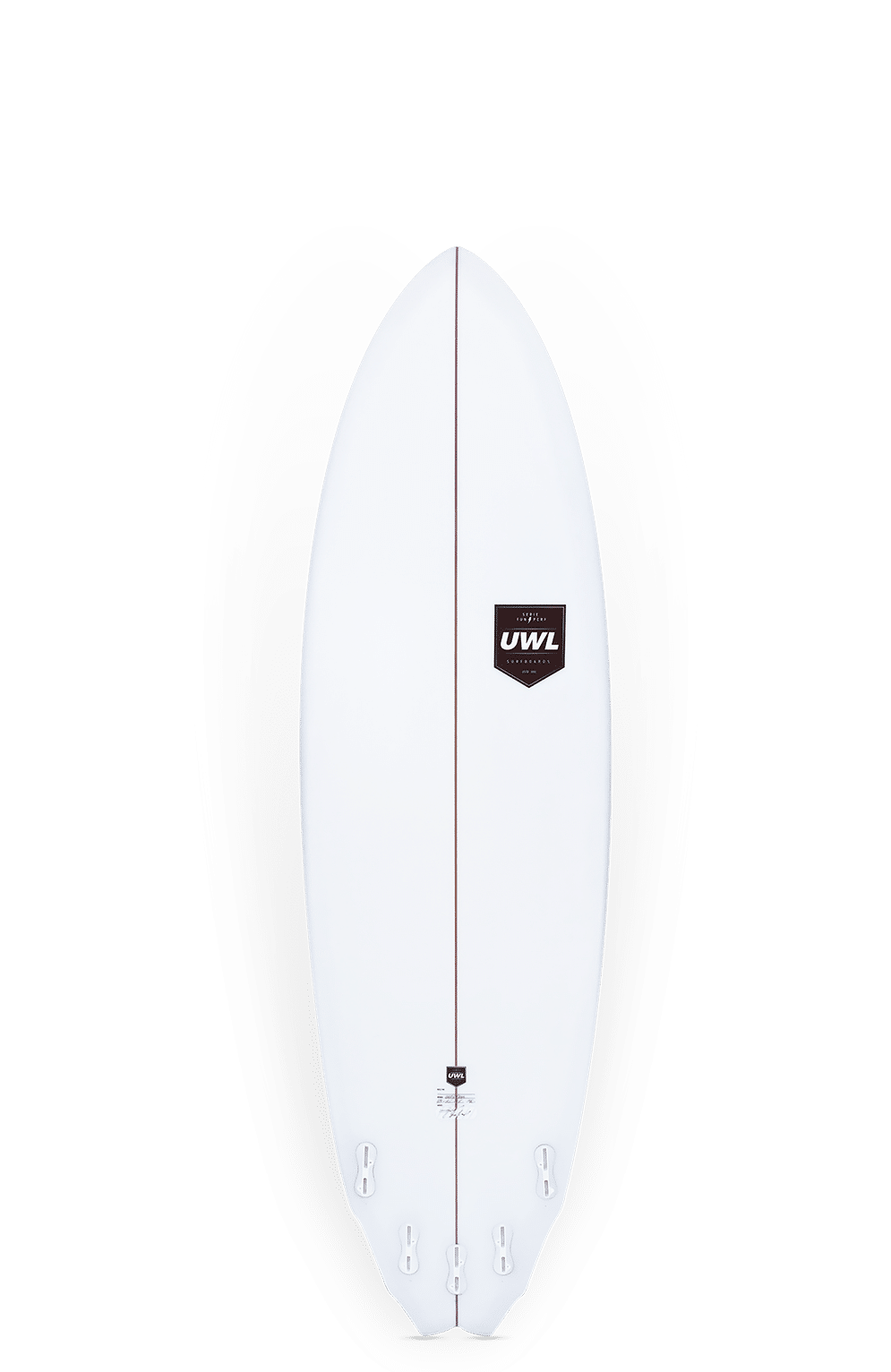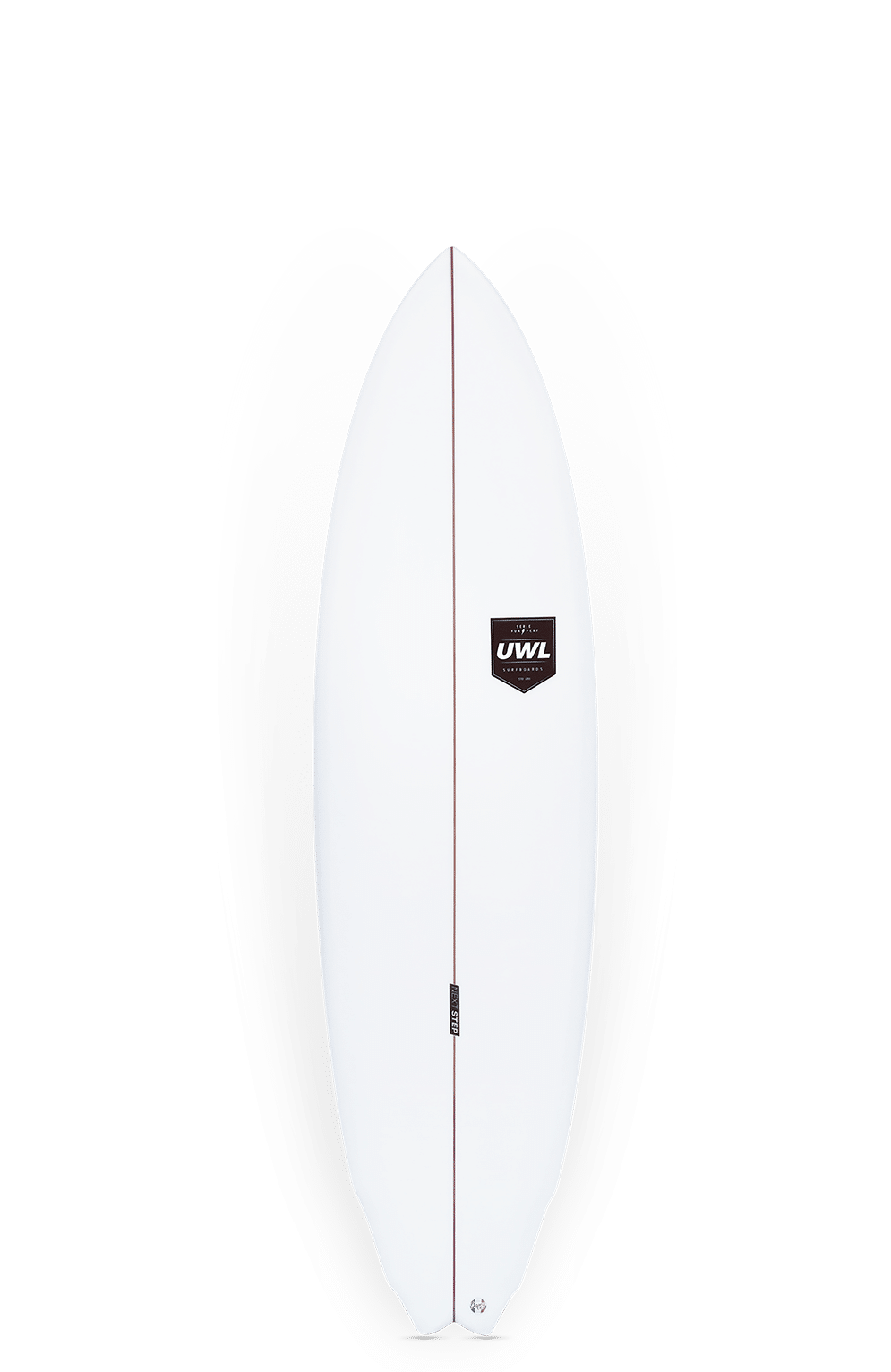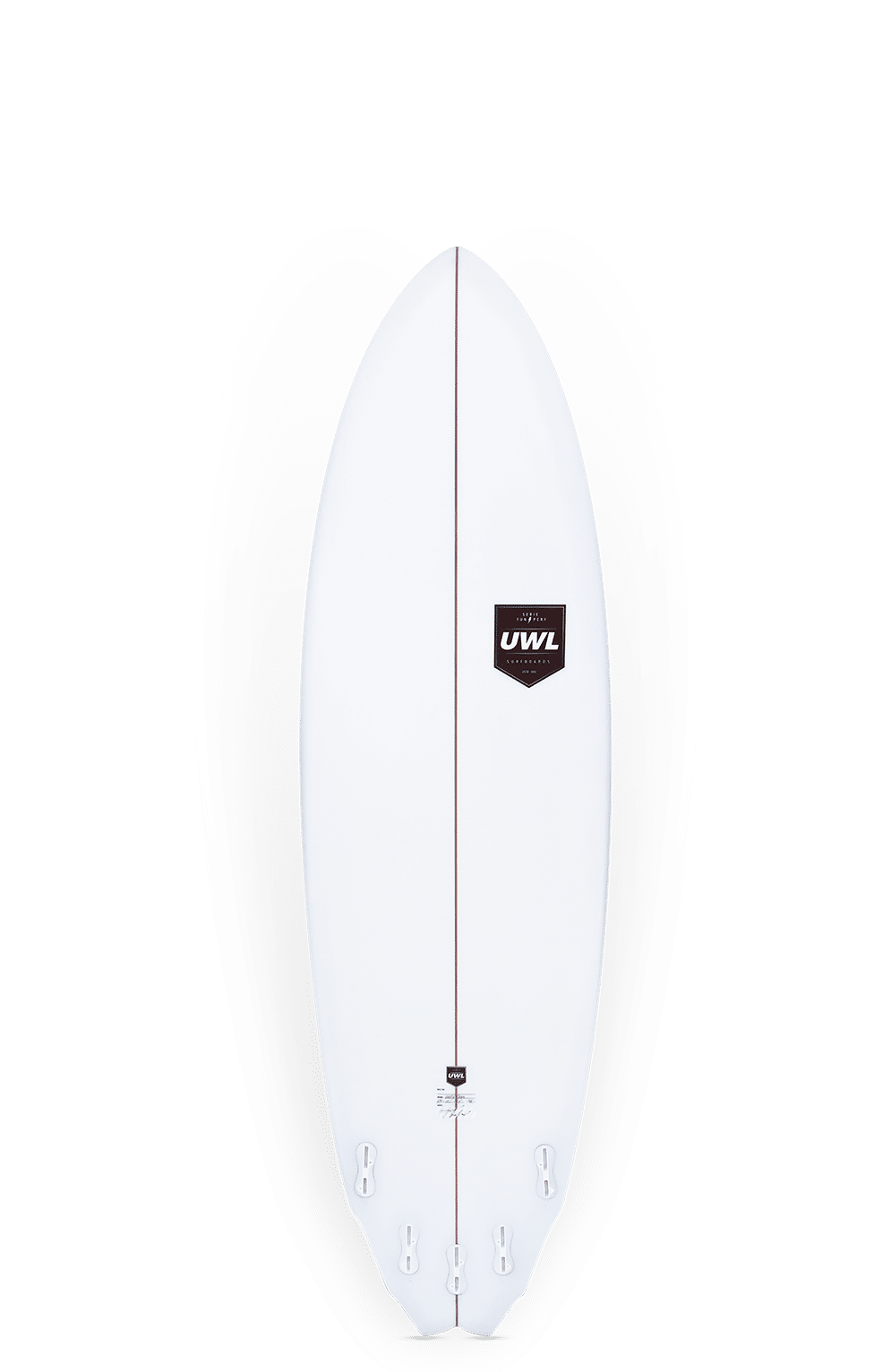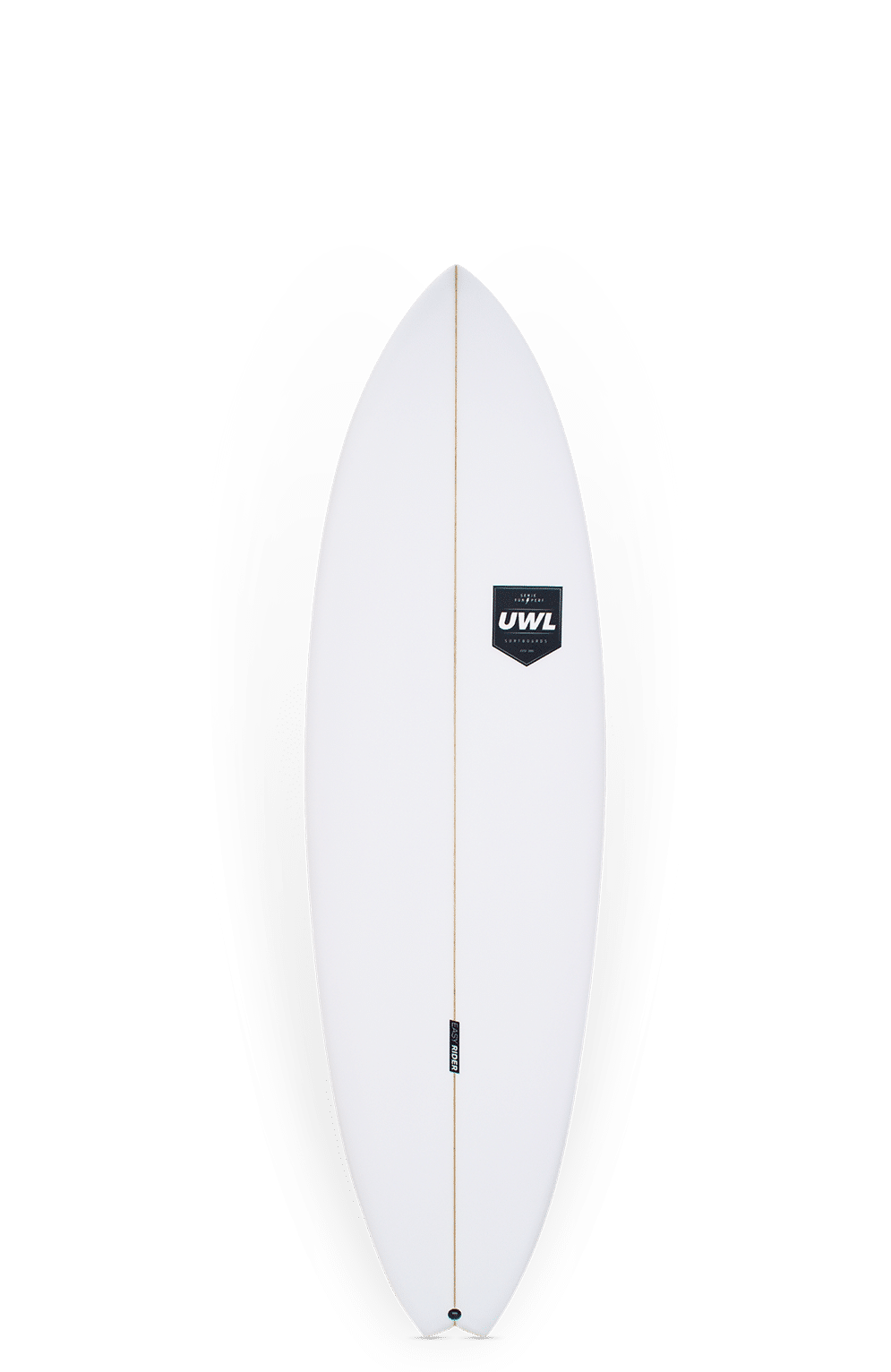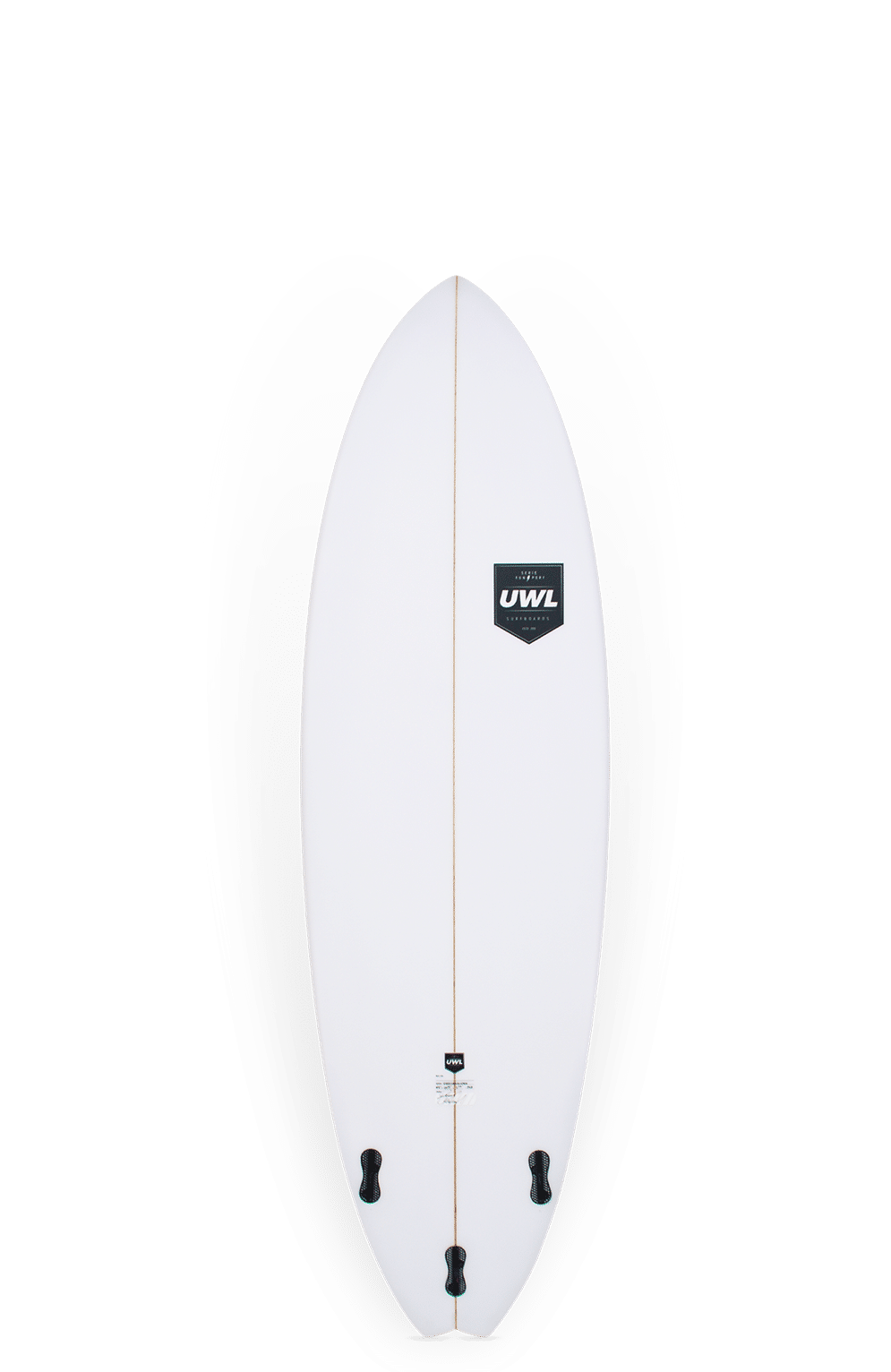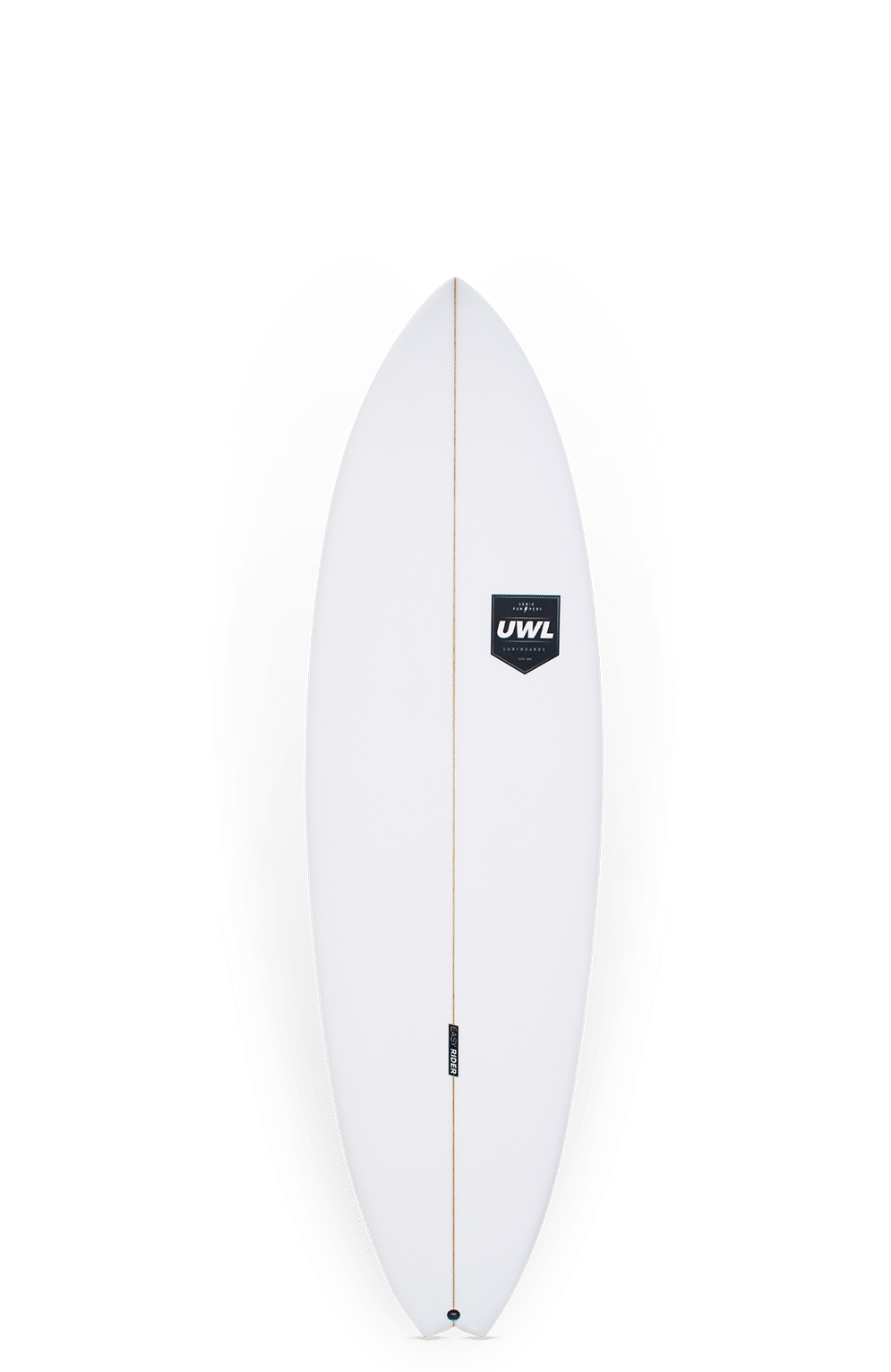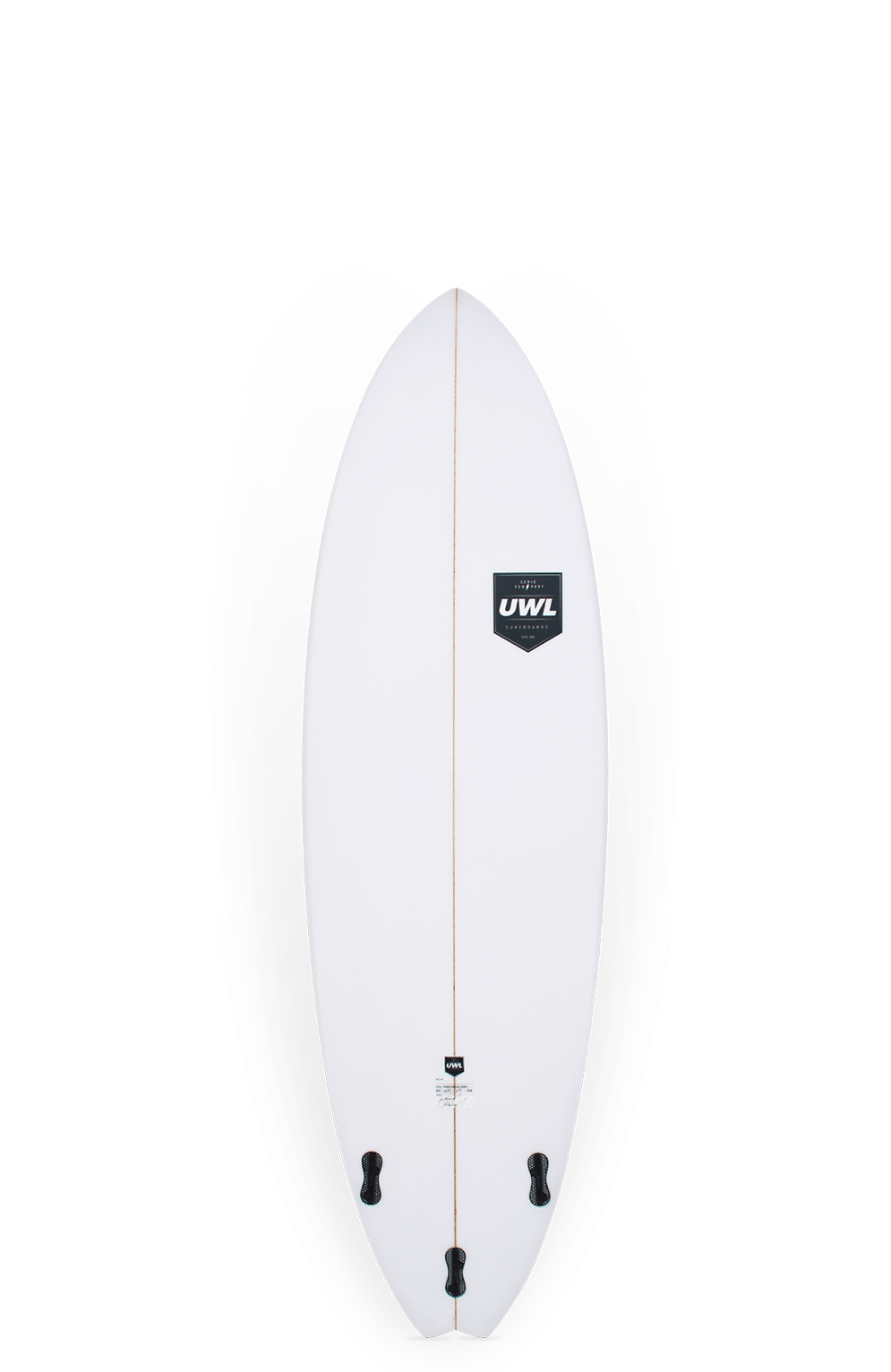Surfboard design is a delicate art where every detail counts, and the tail plays a crucial role in how the board performs on the waves. Each type of tail offers unique advantages, influencing the board's stability, maneuverability and speed. Here's a guide to the most common tail types and their effects on your surf.
1. Squash Tail
Squash tail is undoubtedly the most popular design, thanks to its remarkable versatility. With its rounded corners, it offers a good compromise between the stability of wider tails and the responsiveness of sharper tails. Ideal for medium-sized waves, the squash tail allows tight turns while retaining enough surface area for good propulsion.
2. Round Tail
The round tail offers a smooth transition in turns, making it ideal for larger, more powerful waves. Its rounded shape extends the rail line, offering better traction in the water, which translates into better control at high speeds and in critical sections of the wave.
3. Pin Tail
With its fine point, pin tail is the preferred choice for big wave surfing. This shape reduces the surface area in contact with the water, minimizing drag and allowing optimal penetration of fast waves and tubes. Although less stable on calm waters, the pin tail excels in extreme conditions.
4. Swallow Tail
Recognizable by its V-shape, the swallow tail combines agility and stability, making the board suitable for a wide variety of conditions. The mid-tail separation allows surfers to fully engage in turns while maintaining good grip. It's an excellent choice for surfers looking to mix speed and maneuverability.
5. Square Tail
Le square tail, with its sharp edges, is less common but offers exceptional stability, especially on slow or small waves. This type of tail makes it easier to pick up speed and can be advantageous for beginners looking to gain confidence on the board.
6. Fish Tail
The fish tail, easily recognizable by its shape reminiscent of a fish tail, is often associated with surfboards from type fish. This shape increases the surface area of the board's tail, improving lift and stability in small or soft waves. The fishtail also promotes a better distribution of power on the water, enabling rapid acceleration and tight turns without loss of speed.
7. Asymmetrical Tail
L'asymmetrical tail is a more recent innovation in surfboard design, designed to adapt specifically to the surfer's needs according to his or her position on the wave (left or right). This tailor-made approach modifies the length and shape of the rail on each side of the board to optimize performance and control. Boards with an asymmetrical tail offer a unique surfing experience, enabling precise maneuvers tailored to each surfer's riding preferences.
Conclusion
Choosing the tail of your surfboard should be guided by your surfing style, the conditions in which you surf most often, and what you want to achieve on the water. Whether you're looking for speed, control or a combination of both, there's a tail design to suit your needs. Exploring the different options can open up new dimensions in your surfing and help you get the most out of every session.
Want to explore the different tail shapes and find the perfect board for your surfing aspirations? Visit our webshop or contact us directly for personalized advice. At Shapers Club, we're dedicated to helping you ride the waves with the perfect board, designed specifically for your unique style.
